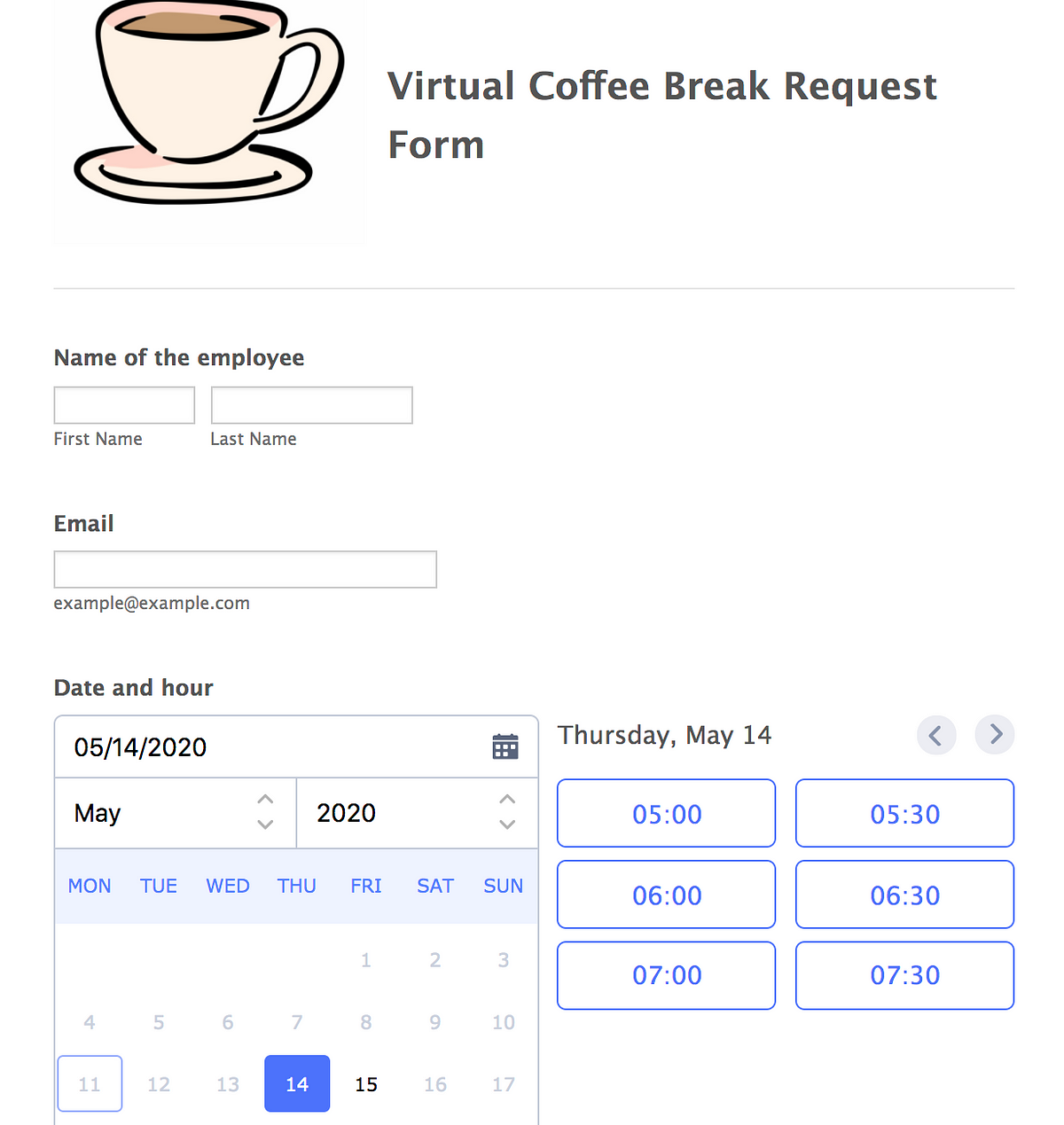Despite the fact that the majority of employees are working from home right now — around 62%, according to Gallup — now might actually be the best time to implement a new ritual of regular coffee breaks with your team.
At the office, coffee breaks tend to be spontaneous — you swing by a colleague’s desk to see if they can escape for half an hour. But when employees are working from home, there’s no such spontaneity. Instead, we have to make a deliberate effort to connect with colleagues.
For Sid Sijbrandij, co-founder and CEO of GitLab, a remote-only company with employees based in 39 countries, virtual coffee breaks were commonplace for his team even before the Covid-19 pandemic. Sijbrandij says that these “[f]ace-to-face interactions are arguably even more important in a remote environment, as they can help prevent potential burnout and isolation.”
GitLab employees don’t just meet their friends for virtual coffee breaks, either. The company uses a #donut_be_strangers channel in Slack, where team members are randomly paired up for coffee breaks by a bot called Donut.
If your team is working remotely, finding new social rituals can help to lessen the emotional toll that the past few months have taken. Here, a few tips for incorporating virtual coffee breaks into your daily grind.
Schedule them regularly
No meetings. No commute. A less comfortable work environment.
These are some of the obvious changes in a work-from-home situation. But many of us take for granted the unstructured social interactions of daily office life.
As Harvard Business School professor Tsedal Neeley explains:
“People lose the unplanned watercooler or cappuccino conversations with colleagues in remote work. These are actually big and important parts of the workday that have a direct impact on performance.”
That’s why Neeley says that in a remote work environment, the frequency of contact between colleagues cannot go down.
Virtual coffee breaks are a great way to maintain connections, so try to do them regularly, just as you would at the office.
“There’s ample research showing that virtual teams can be completely equal to co-located ones in terms of trust and collaboration,” writes Neely.
It might take discipline to not let these social breaks taper off, but continuing them on at least a weekly basis can deliver important benefits.
Establish some ground rules
With virtual meetings becoming the new normal, Neeley recommends setting explicit ground rules. I’d recommend doing the same for non-business meetings, like coffee breaks, too. That way, you can ensure that they serve their purpose of helping people to connect, boost morale, and return to work with more focus, rather than falling into the trap of becoming frustrating time drains.
For example, implement some general etiquette: turn phones off, stop checking emails, be punctual, etc. At Jotform, to make our virtual coffee breaks refreshing but also efficient, we circulate one of our meeting request forms to set times and invite participants.
It would be impossible to avoid discussing the pandemic altogether, but try to add levity, too. Initiate conversations about movies you’ve watched, books you’re reading, and any other projects you’ve embarked upon. I’ve been doing a lot more cooking lately, and I frequently share my recipe hits — and misses — with my team.
Keep it small or break into groups
One of the benefits of coffee breaks is that they allow people, especially introverts, to open up more than they would in larger, structured meetings. When I grab a coffee or go for a lunch walk with an employee, I frequently find that I learn something new about them, be it personal, like their favorite travel destination, or professional, like an idea they’ve been chewing on.
In virtual coffee breaks, try to cultivate the same intimate atmosphere by keeping groups small. As YouTube and virtual happy hour host Natalie Lynch told the New York Times,
“Too many people in a Google Hangout and it just becomes chaos. More than eight to 10 people and conversations can’t really happen without leaving people outside looking in.”
My magic number is two or three participants, but through trial and error, you can see what works for your team.
Opt for the grid view
The point of using video meetings rather than email or phone calls is to approximate the world as we see it. When we’re out to coffee with friends, we’re usually around a table, seeing everyone, but focusing our attention on the speaker. Whether you’re using Google Hangouts or Zoom, the grid view is the second-best option to IRL coffee breaks.
As the New York Times reports, because Zoom outlines the person who’s talking (or making noise), it’s a helpful visual cue to let others know that someone is about to speak, which minimizes people talking over one another.
I know we’re all probably looking forward to the day when we can return to some of our old routines. For the time being, those of us who are working from home can try to enjoy the benefits of the new normal, like time with family, moments for reflection, and a slower pace of life. We can also create new rituals to continue to feel connected.



























Send Comment: